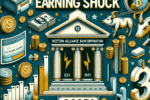Washington, D.C. — As the Federal Open Market Committee (FOMC) convened in May, market watchers anticipated a steadfast approach from policymakers amid lingering economic uncertainties. With inflation remaining elevated and growth projections uncertain, the committee’s decisions are under intense scrutiny.
Recent economic indicators have painted a mixed picture. While consumer spending showed resilience, inflation has proven stubbornly above target levels. This has led to speculations that the FOMC might adopt a cautious stance, potentially pausing interest rate hikes to assess the broader economic landscape.
Many analysts believe that the committee’s decision-making process hinges on incoming data. Recent metrics related to employment and manufacturing will play a crucial role in shaping future monetary policy. The job market remains robust, but signs of slowing growth in key sectors could temper expectations for aggressive rate increases.
In its previous meetings, the FOMC had signaled a commitment to combating inflation. However, the current economic climate encourages a careful evaluation of the impacts of past rate hikes. As borrowers feel the pinch of increased rates, there are concerns that further tightening could stifle economic recovery.
Economists suggest that the committee is facing a balancing act: managing inflation without derailing growth. While a pause in rate increases might provide some relief to consumers and businesses alike, it also risks allowing inflation to persist. Industry leaders and policymakers are urging the FOMC to remain vigilant.
Additionally, geopolitical factors, including ongoing global tensions and supply chain disruptions, contribute to the complexity of the committee’s deliberations. These external pressures may influence the FOMC’s strategy as it navigates the choppy waters of economic recovery.
As the meeting concluded, financial markets reacted cautiously, reflecting uncertainty about future policy directions. Investors are keenly watching for signals from the committee that may hint at its next moves, balancing interest rates and inflation management while fostering economic growth.
In the coming weeks, the FOMC will likely assess the implications of its decisions and their effects on the broader economy. The central bank’s commitment to transparency will be essential in guiding public confidence as it adapts to ever-evolving economic conditions. The path forward remains uncertain, but the committee’s deliberations in May will undoubtedly influence policy discussions for months ahead.










